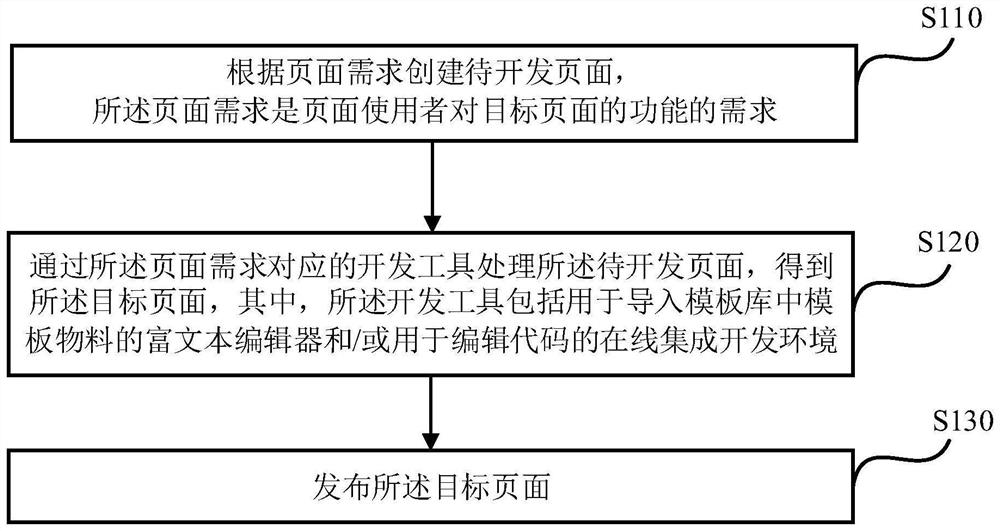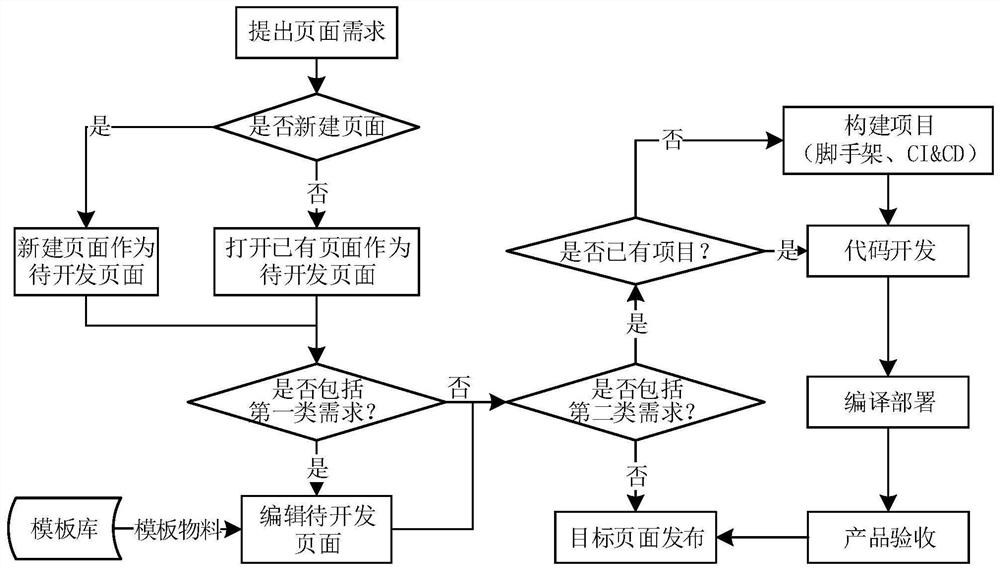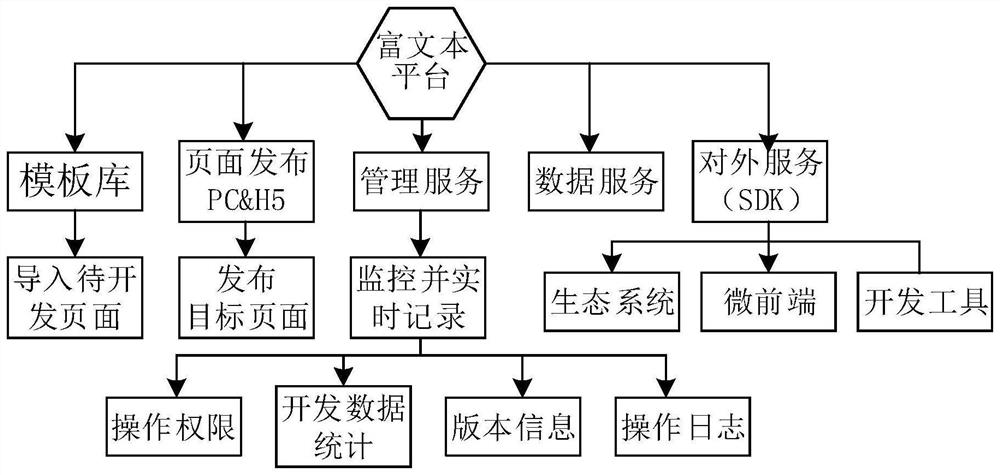Page development method and device, server and storage medium
A page and target page technology, applied in the direction of instruments, calculations, electrical digital data processing, etc., can solve the problems of low development efficiency, investment in communication costs, occupancy, etc., to achieve the effect of improving development efficiency and meeting diverse needs
- Summary
- Abstract
- Description
- Claims
- Application Information
AI Technical Summary
Problems solved by technology
Method used
Image
Examples
Embodiment Construction
[0058]The present invention will be further described in detail below in conjunction with the accompanying drawings and embodiments. It should be understood that the specific embodiments described herein are only used to explain the present invention, but not to limit the present invention. In addition, it should be noted that, for the convenience of description, the drawings only show some but not all structures related to the present invention.
[0059] Before discussing the exemplary embodiments in greater detail, it should be mentioned that some exemplary embodiments are described as processes or methods depicted as flowcharts. Although a flowchart depicts various operations (or steps) as a sequential process, many of the operations may be performed in parallel, concurrently, or concurrently. Additionally, the order of operations can be rearranged. The process may be terminated when its operation is complete, but may also have additional steps not included in the figures...
PUM
 Login to View More
Login to View More Abstract
Description
Claims
Application Information
 Login to View More
Login to View More - R&D
- Intellectual Property
- Life Sciences
- Materials
- Tech Scout
- Unparalleled Data Quality
- Higher Quality Content
- 60% Fewer Hallucinations
Browse by: Latest US Patents, China's latest patents, Technical Efficacy Thesaurus, Application Domain, Technology Topic, Popular Technical Reports.
© 2025 PatSnap. All rights reserved.Legal|Privacy policy|Modern Slavery Act Transparency Statement|Sitemap|About US| Contact US: help@patsnap.com



